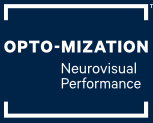Concussion recovery programs are now common in many clinics and hospitals. Many of these fantastic concussion or neuro-rehab programs are missing one critical component: vision. According to Johns Hopkins director Dr. Eric Singman, MD PHD:
‘there should be vision specialists dedicated to working with patients who demonstrate deficiencies in eye teaming, loss of visual acuity and/or visual field as well as uncoupling of ‘visuospatial awareness’.
When vision is not part of the concussion treatment plan, it can increase the length of post concussion syndrome and interfere with other treatments. You’re probably thinking that ‘of course the eyes get examined’. This may not be enough because most examinations look at health and clarity, while no testing is done for eye tracking, teaming, or visual-spatial processing. These are the things that could be preventing recovery from a concussion. Here’s why.
Vestibular rehabilitation: Vestibular rehab is about the brain re-learning to process the information from the vestibular system (inner ear). It is a series of exercises done to help with this. If you have been through vestibular rehab, or have knowledge of the area, you will quickly realize that a lot of the exercises uses vision. In fact, it relies on vision to be effective. If depth/spatial processing is not accurate, then vestibular rehab can often cause increased symptoms without benefit, or cause a person to become plateaued in their post-concussion recovery. Just yesterday I saw a woman who had been through 3 years of vestibular rehabilitation, and was not able to balance in a tandem walk until she was wearing glasses that helped her visual processing of space. Before undertaking vestibular rehabilitation as part of your concussion treatment program, please make sure you have your visual processing checked.
Cognitive TherapyCognitive therapy often involves exercises for memory, attention, multi-tasking and more. Most of this treatment requires vision in order to do the treatment. If the eyes don’t work well together, it is much harder to sustain your focus or attention. Similar to how it would be much harder to keep up your normal running pace if you had a bad knee, and more running wouldn’t really make it better. Another patient this week was in the midst of cognitive therapy for attention, reading and memory. Her eyes had not yet been properly checked for tracking and teaming. Her rehab team, and family noticed an immediate improvement in symptoms and abilities even with just the glasses alone. We are now beginning vision therapy/rehabilitation to fully treat her visual conditions.
DesensitizationDesensitization can be an important principal in some treatments. Vision does not work this way. If a person is having light sensitivity, difficulty with seeing motion, busy environments, computer screens, reading, or similar, then gradually increasing exposure is often not the answer. If we go back to the broken leg analogy, more exposure to running won’t really fix your problem. You may learn to live with the pain, or adapt a different running style, but you’ll never truly recover. Once the leg has been properly treated, then more running will actually be helpful. This is the same with respect to vision. Vision dysfunction after concussion can cause symptoms such as:
- light sensitivity
- screen sensitivity
- trouble reading
- over stimulation in busy places
- dizziness
- nausea
- headaches/migraines
- fogginess
- trouble driving
The problem is that the visual function is often overlooked, and the person ends up trying to return to work, play, or life with undiagnosed vision conditions. The end result is about as good as returning to running with a broken leg.
Many concussion programs will include some generic ‘eye exercises’ which are unfortunately often given out by someone who does not have the education, training, or appropriate qualification. Often it is done with the best intention, but without proper diagnosis and treatment it can prolong or interfere with recovery. The concussion clinics often have some amazing practitioners, but if vision is missing it can be a problem.
What can be done?See an optometrist who works specifically with visual function after head injury. Often referred to as a neuro-optometrist, this doctor will be able to look at how your brain is actually using your eyes, and processing the incoming information. These are areas that routine eye testing, ophthalmology, and neuro-ophthalmology often do not test for. Testing is straight forward, objective and can determine if there are areas of vision requiring treatment.
Treatment can involve glasses that are used to help improve how efficiently your eyes work together, or how accurately your brain can process the environment around you. This can immediately improve screen tolerance, balance, light sensitivity, nausea and more. Treatment may involve vision therapy or rehabilitation to re-train your eyes and brain to work together properly. Success rates for significant symptom improvement and objectively measured functional improvements are close to 95%. These types of treatment are managed in conjunction with your other professionals such as a physiotherapist, chiropractor, occupational therapist, physiatrist and more.
The optimal order is to first have benign paroxysmal positional vertigo checked for and treated, along with any cervical (neck) conditions. Then have vision assessed (can be done concurrently with cervical care). Once vision works well, vestibular rehab may be applicable. The occupational therapist is often of assistance through the entire process with overall care management and strategies.
If you know someone still struggling with post-concussion syndrome, or symptoms after a head injury, please make sure that they see an optometrist who works in this field. Getting their life back could depend on it.
